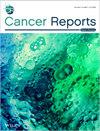Comparison of Machine Learning Models for Classification of Breast Cancer Risk Based on Clinical Data
Abstract
Background
Breast cancer (BC) is a major global health concern with rising incidence and mortality rates in many developing countries. Effective BC risk assessment models are crucial for prevention and early detection. While the Gail model, a traditional logistic regression-based model, has been broadly used, its predictive performance may be limited by its linear assumptions. With the rapid advancement of artificial intelligence (AI) in medical sciences, various complex machine learning algorithms have been developed for risk prediction, including for BC.
Aims
This study aims to compare the quality of AI-based models with the traditional Gail model in assessing BC risk using a population dataset. It also evaluates the performance of these models in predicting BC risk.
Methods and Results
This study involved 942 newly diagnosed BC patients and 975 healthy controls at the Cancer Institute in IKH hospital Complex, Tehran. Ten classification algorithms were applied to the dataset. The accuracy, sensitivity, precision, and feature importance in the machine learning algorithms were assessed and compared to previous studies for evaluation. The study found that AI algorithms alone did not significantly improve predictability compared to the Gail model. However, the importance of variables varied significantly among the AI algorithms. Understanding feature importance and interactions is crucial in AI modeling in order to enhance accuracy and identify critical risk factors.
Conclusion
This study concluded that, in BC risk prediction, incorporating specific risk factors, such as genetic and image-related variables, may be necessary to further enhance accuracy in BC risk prediction models. Furthermore, it is crucial to address modeling issues in models with a restricted number of features for future research.


 求助内容:
求助内容: 应助结果提醒方式:
应助结果提醒方式:


